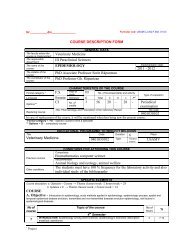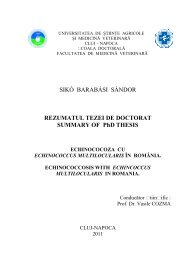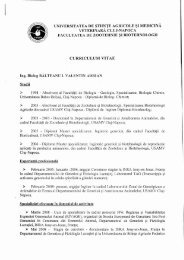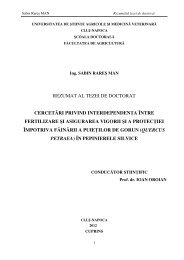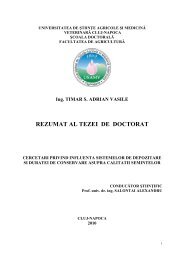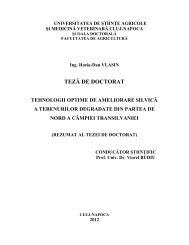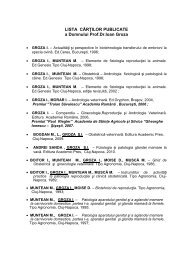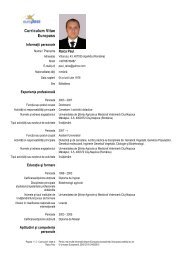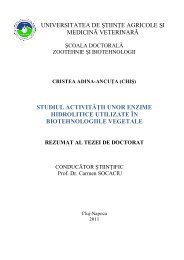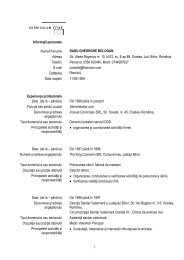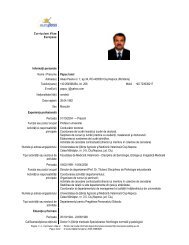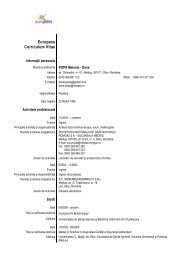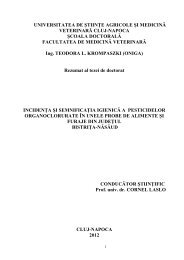Marioara Urda _Grebenisan_ rezumat_teza_engleza - USAMV Cluj ...
Marioara Urda _Grebenisan_ rezumat_teza_engleza - USAMV Cluj ...
Marioara Urda _Grebenisan_ rezumat_teza_engleza - USAMV Cluj ...
Create successful ePaper yourself
Turn your PDF publications into a flip-book with our unique Google optimized e-Paper software.
<strong>Marioara</strong> GREBENIŞAN Summary of the PhD thesis<br />
Research on the structure of di- and tetraploid red clover seed plants and the influence of meiotic<br />
anomalies on the fertility of autotetraploid forms<br />
The duration of the pollen tubes growth is similar for the 2n and 4n forms,<br />
the differences occurring in the growth speed and the length to the ovary.<br />
germination.<br />
A population effect was noticed, with positive influence upon pollen<br />
The repetition of compatible and incompatible pollination weakens the<br />
mechanisms of self-incompatibility of the red clover, mainly of the tetraploid forms.<br />
An interesting aspect of the comparison regarding the fertility of red clover<br />
with different ploidy levels is represented by the evolution of embryogenesis. The<br />
research undertaken for the interval pollination-seed formation has shown the<br />
development of ovaries and embryos under the conditions of free pollination (PIL),<br />
spontaneous pollination (APS) and artificial self-pollination (APA).<br />
The study of embryogenesis from the point of view of the development of<br />
the pre-embryo, suspensor, cotyledons and apex highlighted the fact that, in the case<br />
of free pollination (PIL), the difference between di- and tetraploids consists mainly<br />
in the more obvious earliness of the tetraploids in the first 10 days after pollination,<br />
whereas both ploidy forms reach the maximum development of embryos in 14-15<br />
days after pollination (table 5.7).<br />
Self-pollination does not bring any morphological changes during<br />
embryogenesis. However, a higher percentage of normal ovaries and ovules was<br />
noticed in diploid forms.<br />
Another observation was that the tetraploids provided a higher percentage of<br />
aborted embryonic sacs than the diploids, whereas after pollination, the fertility<br />
decrease percentage is similar in di- and tetraploids.<br />
It appears that poliploidization affects fertility more in macrosporogenesis, as<br />
compared to the same phenomenon in diploids.<br />
The fertility decrease seems to happen owing to the abortion of one of the<br />
ovules present in a normal ovary, the abortion of the second one or of the embryo<br />
being also possible (table 5.9).<br />
11



